I have been reading a pdf file on OpenGL lighting.
It says for the Gouraud Shading:
• Gouraud shading
– Set vertex normals
– Calculate colors at vertices
– Interpolate colors across polygon
• Must calculate vertex normals!
• Must normalize vertex normals to unit length!
So that's what I did. Here is my Vertex and Fragment Shader file
V_Shader:
#version 330
layout(location = 0) in vec3 in_Position; //declare position
layout(location = 1) in vec3 in_Color;
// mvpmatrix is the result of multiplying the model, view, and projection matrices */
uniform mat4 MVP_matrix;
vec3 ambient;
out vec3 ex_Color;
void main(void) {
// Multiply the MVP_ matrix by the vertex to obtain our final vertex position (mvp was created in *.cpp)
gl_Position = MVP_matrix * vec4(in_Position, 1.0);
ambient = vec3(0.0f,0.0f,1.0f);
ex_Color = ambient * normalize(in_Position) ; //anti ex_Color=in_Color;
}
F_shader:
#version 330
in vec3 ex_Color;
out vec4 gl_FragColor;
void main(void) {
gl_FragColor = vec4(ex_Color,1.0);
}
The interpolation is taken care by the fragment shader right?
so here is my sphere (it is low polygon btw):

Is this the standard way of implementing Gouraud Shading? (my sphere has a center of (0,0,0)) Thanks for your patience